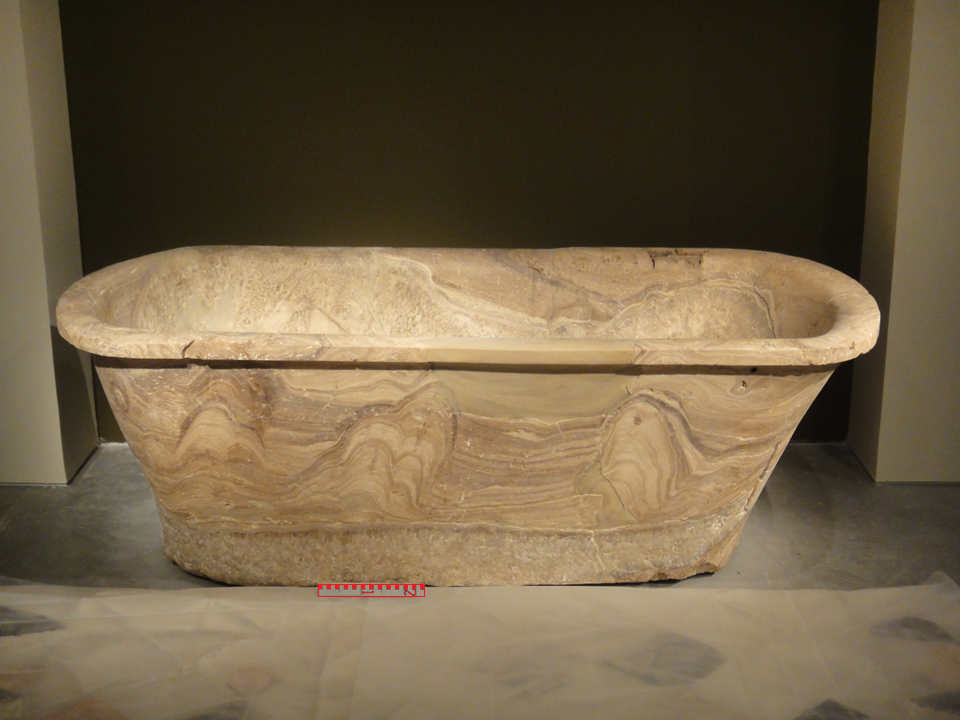Archeologists Discover Where Herod Got the Alabaster for his Bathtubs
By Hamodia Staff

YERUSHALAYIM – New archeological findings in a cave near Beit Shemesh have refuted the long-held assumption that any alabaster in ancient Israel was imported from Egypt.
The discovery of a calcite-alabaster quarry in the Te’omim cave, located on the western slopes of the Yerushalayim hills (near modern-day Beit Shemesh), indicates that such stone was quarried locally, and were used in making such notable artifacts as the alabaster bathtubs of King Herod.
Archeologists employed multiple analytical methods to compare calcite-alabaster mined in Egypt with that from Israel. All tests yielded the same result: that the Egyptian and Israeli samples were distinctly different.
“All four analytical methods applied in the study provided consistent results, clearly distinguishing the Israeli from the Egyptian calcite-alabaster for the first time,” said Prof. Amnon Albeck, of the Department of Chemistry at Bar-Ilan University.

The same methods were then applied to two of Herod the Great’s royal bathtubs, which were made of finely worked calcite-alabaster and found in the Kypros fortress and the palace of Herodion, located just south of Yerushalayim. The results unequivocally indicated that the bathtubs were quarried in Israel and not in Egypt, the main source of calcite-alabaster in ancient periods.
“The fact that both bathtubs were unequivocally quarried in Israel and not in Egypt, as we would have expected due to the high quality of the stone, was a particular surprise because that means that Herod the Great used local produce, and that the calcite-alabaster industry in Judea in the second half of the first century B.C.E. was sufficiently developed and of high enough quality to serve the luxurious standards of Herod, one of the finest builders among the kings of that period,” said Prof. Aren Maeir, also of Bar-Ilan.
To Read The Full Story
Are you already a subscriber?
Click "Sign In" to log in!

Become a Web Subscriber
Click “Subscribe” below to begin the process of becoming a new subscriber.

Become a Print + Web Subscriber
Click “Subscribe” below to begin the process of becoming a new subscriber.

Renew Print + Web Subscription
Click “Renew Subscription” below to begin the process of renewing your subscription.












